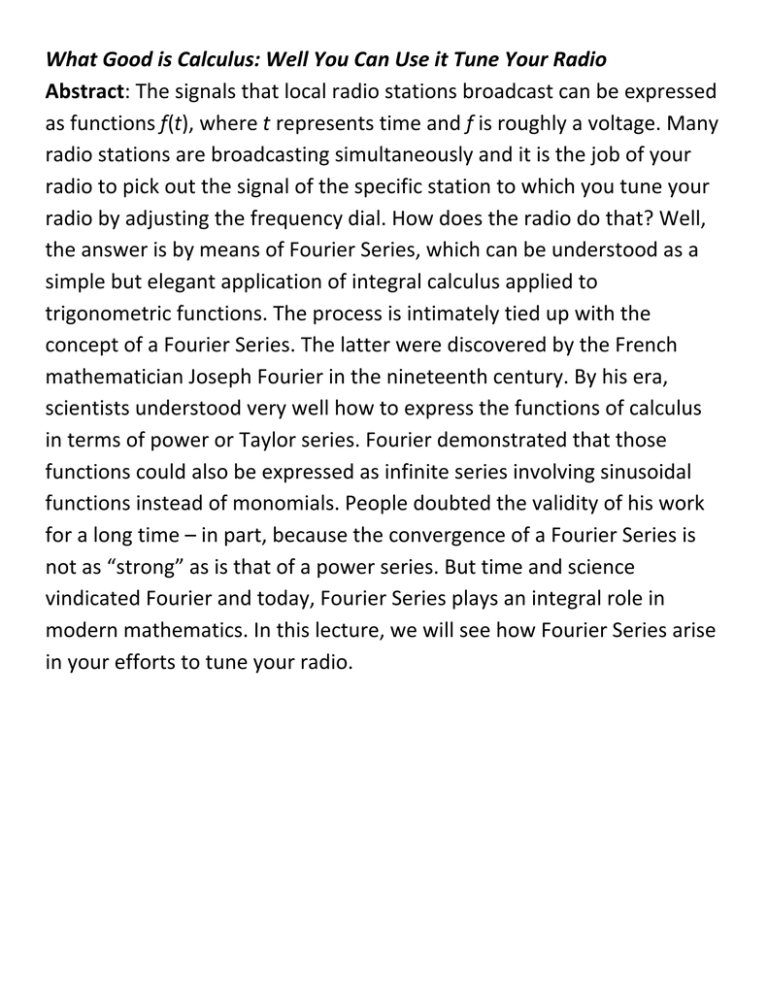What Good is Calculus: Well You Can Use it Tune Your Radio
advertisement

What Good is Calculus: Well You Can Use it Tune Your Radio Abstract: The signals that local radio stations broadcast can be expressed as functions f(t), where t represents time and f is roughly a voltage. Many radio stations are broadcasting simultaneously and it is the job of your radio to pick out the signal of the specific station to which you tune your radio by adjusting the frequency dial. How does the radio do that? Well, the answer is by means of Fourier Series, which can be understood as a simple but elegant application of integral calculus applied to trigonometric functions. The process is intimately tied up with the concept of a Fourier Series. The latter were discovered by the French mathematician Joseph Fourier in the nineteenth century. By his era, scientists understood very well how to express the functions of calculus in terms of power or Taylor series. Fourier demonstrated that those functions could also be expressed as infinite series involving sinusoidal functions instead of monomials. People doubted the validity of his work for a long time – in part, because the convergence of a Fourier Series is not as “strong” as is that of a power series. But time and science vindicated Fourier and today, Fourier Series plays an integral role in modern mathematics. In this lecture, we will see how Fourier Series arise in your efforts to tune your radio.






